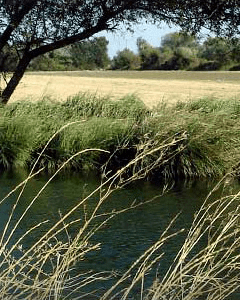
California agriculture provides valuable environmental resources such as open space and habitat. Irrigated agriculture is committed to protecting wildlife while maintaining farming operations.
California farms provide important environmental benefits, such as habitat for wildlife and migratory waterfowl. Additionally, agriculture often serves as an important food source for many species as harvesting typically leaves some product behind in the field.
Crops such as rice and alfalfa have traditionally been criticized for their water use. However, these crops actually provide benefits to the environment.
Cultivated agricultural lands cleanse the atmosphere through photosynthesis. For example, according to the California Rice Industry Association, Sacramento Valley rice fields produce enough oxygen each year to sustain the entire population of Los Angeles. Each acre of rice “scrubs” about 23,000 pounds of carbon dioxide from the atmosphere. That is the same amount produced by a typical automobile in a year.
Alfalfa provides valuable habitat and serves as the base of the food chain. Alfalfa fields attract many beneficial insects and provide an important food source for birds. Because it is a perennial, alfalfa fields are often home to rodents, rabbits and other herbivores. This activity attracts foxes, hawks and other hunters to the fields in search of their food source, thus completing the chain.
Agriculture is a major planter of trees in California, with approximately 150 million trees currently in the ground. When grapevines are added to this figure, the total number increases to about 520 million.
These environmental benefits occur while farmers continue to use water wisely. Learn more about water conservation and agricultural water use efficiency in a short video by clicking HERE. In addition, to the benefits to wildlife, the aesthetic benefits of agricultural open space contribute to the overall quality of life in the Golden State.
